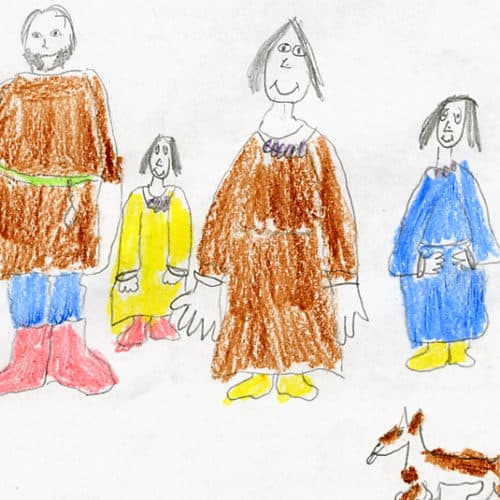Anglo-Saxons activity 2: animated Anglo-Saxon ancestors
Overview
Children work in small teams to create a short stop-motion animation inspired by the Anglo-Saxon cemetery excavated at Dover Hill, Folkestone.
Learning objectives
Increased knowledge and understanding of archaeology and Anglo-Saxon Folkestone.
Story-boarding, art and animation skills.
Curriculum links
KS1-2 History (Anglo-Saxons, Local History Study).
KS1-2 English, Art and ICT (Create an animation)
Ask the class to share their favourite animations (including animated films).
Discuss what animation is and how they are made.
- Has anyone made one before?
- How did they do it?
- What software did they use? Camera? Tripod?
- Do you know any famous animators? (Nick Park perhaps)
- What is stop-frame animation?
- What is CGI?
- How would you make 2D and 3D animations?
- How are you going to make your characters?
- What materials would you use? Card cut-outs? modelling clay?
- How do you make them move?
- What about speech, sounds, models of buildings? backgrounds?
- How do you plan the story? Introduce storyboarding.
Research and watch some short animations inspired by Anglo-Saxon people, sites and artefacts or stories. Look at examples made by both professional animators and children. And discuss what you liked about them.
In Google enter ‘Anglo-Saxon museum animation’ as the search term to bring up lots of examples. Click on Videos to look at some and discuss them critically. You could start with these three…
https://www.youtube.com/watch?v=tn4tAwIYrRo
https://www.bbc.co.uk/programmes/p01zfvrw
https://www.youtube.com/watch?time_continue=46&v=m71IRjlGPdU&feature=emb_title
Use the following questions to discuss the animations:
- Which did you like about them and why?
- Which told a story?
- Which were easy to understand?
- Which captured your attention?
- Which were a bit boring? Why?
- Can you make a good animation that is simple to make?
Of course you can!!
Here are some ideas of what might be included in the animation:
- One or more Anglo-Saxon people - when they were alive - working, cooking, eating, trying on beads or a necklace, building a house, or fighting with their spears and shields in battle.
- An Anglo-Saxon funeral and burial of one of the bodies
- A scientific part on how the body and clothes rot in the grave leaving only the skeleton and hard materials, such as an iron spear and shield boss, or glass, amber and pottery beads
- The excavation of a grave by an archaeologist (choose one from the photos) showing the removal of grass, and soil layers, by spade and wheelbarrow then the gradual revealing of a skeleton using an archaeologist’s trowel.
- The removal of the skeleton nearest to the road for display at the museum. A long wooden board was slid under it and it was then carefully cut round and lifted onto a cart with the soil surrounding it before being displayed in an old-fashioned glass case at Folkestone Museum (then in the Grace Hill Library building).
- The skeleton on display in Folkestone Museum today, with children visiting to look at it.
- And if you really want to use your imagination, what happens to the skeleton and other artefacts after the museum closes for the night!
Here are some animation tips
- Ask each group to create a simple storyboard first and discuss it with them.
- Next ask them to create characters, models, props and backgrounds.
- Give different team members different roles suited to their interests
- Before filming show them how to use the camera and animation software
- Voices, music or sound effects can be added at the editing stage
- Have an Anglo-Saxon Animation Festival Premiere, to show off the completed animations in front of the whole class or school.
Completed animations can be hosted on the Learn with Objects website. Contact Folkestone Museum for details.
Learn with Objects links
For information and images use:

